Related Research Articles

Sir Francis Walsingham was principal secretary to Queen Elizabeth I of England from 20 December 1573 until his death and is popularly remembered as her "spymaster".

Henry Cary, 1st Viscount Falkland, KB, PC was an English landowner and politician who sat in the House of Commons from 1601 to 1622. He was created Viscount Falkland in the Scottish peerage in 1620. He was Lord Deputy of Ireland from 1622 until 1629.

Sir Anthony Denny was Groom of the Stool to King Henry VIII of England, thus his closest courtier and confidant. In 1539 he was appointed a gentleman of the privy chamber and was its most prominent member in King Henry's last years, having together with his brother-in-law, John Gates, charge of the "dry stamp" of the King's signature, and attended the King on his deathbed. He was a member of the Reformist circle that offset the conservative religious influence of Bishop Gardiner. He was a wealthy man, having acquired several manors and former religious sites distributed by the Court of augmentations after the Dissolution of the Monasteries.
Thomas Wharton, 2nd Baron Wharton (1520–1572), of Wharton and Nateby, Westmoreland, Beaulieu alias New Hall, Essex and Westminster, Middlesex, was an English peer.
Sir Edward Waldegrave was an English courtier and Catholic recusant.

Frances Seymour, Duchess of Somerset was an English noblewoman who lived during the reigns of Elizabeth I, James I, Charles I and Charles II. Her father was Robert Devereux, 2nd Earl of Essex, Elizabeth I's favourite who was executed for treason in 1601. She was the second wife of William Seymour, 2nd Duke of Somerset, and the mother of his seven children.

Sir John Cary (or Carey) (c. 1491 – 1552), of Pleshey in Essex, was a courtier to King Henry VIII, whom he served as a Groom of the Privy Chamber, and of whom he was a third cousin, both being 4th in descent from John Beaufort, 1st Earl of Somerset (1371-1410).
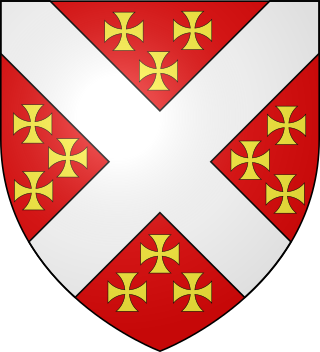
Sir Edmund Denny, of Cheshunt was a Tudor courtier and politician. He was a Baron of the Exchequer during the reign of Henry VIII of England.
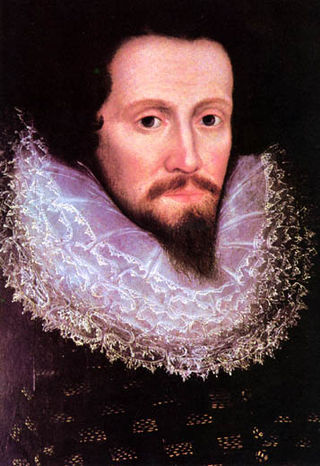
Anthony Bacon (1558–1601) was a member of the powerful English Bacon family and was a spy during the Elizabethan era. He was Francis Bacon's elder brother.

Sir Edmund Walsingham of Scadbury Hall, Chislehurst in Kent, was a soldier, Member of Parliament, and Lieutenant of the Tower of London during the reign of King Henry VIII.
Anthony Carleton was a landowner and Member of Parliament, and the father of Dudley Carleton, 1st Viscount Dorchester.
Thomas Darcy, 1st Earl Rivers was an English peer and courtier in the reigns of Elizabeth I, James I and Charles I.
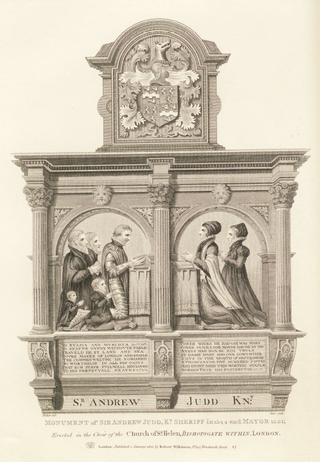
Sir Andrew Judde or Judd was a 16th-century English merchant and Lord Mayor of London. He was knighted on 15 February 1551.
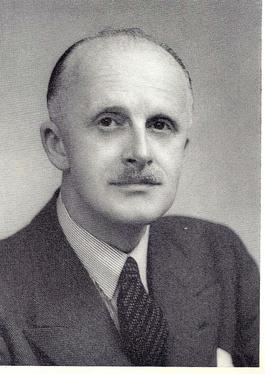
Frederick George "Derick" Emmison was a British archivist, author and historian. He was County Archivist for Bedfordshire between 1925 and 1938, County Archivist for Essex between 1938 and 1969, a founder member of the British Records Association and the Society of Archivists, and a winner of the John Bickersteth Medal in 1974 and the Medlicott Medal in 1987. He was also a prolific author who made a significant contribution to our understanding of the Elizabethan era through close analysis of the minutiae of local records of that age in Essex.

Lucius Henry Cary, 6th Viscount Falkland was a Scottish peer and Jacobite.

James Home, 2nd Earl of Home was a Scottish nobleman.

Scadbury is a historic manor in the parish of Chislehurst in the London Borough of Bromley, England. Much of the estate is preserved today as Scadbury Park, a 300-acre (120 ha) Local Nature Reserve and a Site of Metropolitan Importance for Nature Conservation. The manorial chapel, known as the Scadbury Chapel, survives in the church of St Nicholas at Chislehurst, and served as a burial place for owners of the estate, including members of the Walsingham family.
Lucius Charles Cary, 7th Viscount Falkland was a Scottish peer.

Edward Cary or Carey or Carye was an English courtier and Master of the Jewel Office for Elizabeth I and James VI and I.
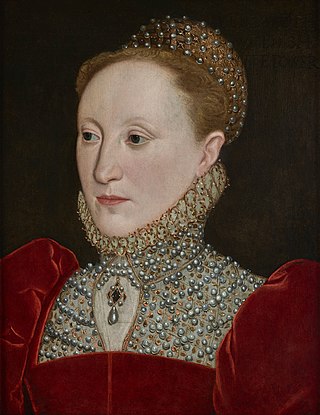
John Tamworth was an English courtier, Member of Parliament (1563), and ambassador to Scotland.
References
- ↑ Robert Hutchinson, Elizabeth's Spymaster: Francis Walsingham and the Secret War that saved England (London: Phoenix, 2007), p. 26.
- ↑ Winthrop Still Hudson, The Cambridge Connection and the Elizabethan Settlement of 1559 (Duke, 1980), p. 65.
- ↑ Maria Hayward, The Inventory of Whitehall Palace, 2 (Illuminata Press, 2004), p. 74.
- ↑ Retha M. Warnicke, Elizabeth of York and Her Six Daughters-in-Law: Fashioning Tudor Queenship (Palgrave Macmillan, 2017), p. 71.
- ↑ Stephen Alford, Kingship and Politics in the Reign of Edward VI (Cambridge, 2002), 154.
- ↑ Alan Haynes, Walsingham: Elizabethan Spymaster and Statesman (History Press, 2007).
- ↑ William Archibald Scott Robertson, 'Chislehurst and its Church', Kentish Archaeology, 4 (London, 1880), p. 8.
- ↑ Conyers Read, Mr Secretary Walsingham and the Policy of Queen Elizabeth, vol. 1 (Clarendon Press, 1925), p. 12.
- ↑ F. G. Emmison, Elizabethan Life: Wills of Essex Gentry and Merchants (Chelmsford, 1978), p. 18.
- ↑ 'TAMWORTH, John (c.1524-69), of Sandon, Essex; Sutton, Lincs', History of Parliament: the House of Commons 1558-1603, ed. P.W. Hasler, 1981
- ↑ John Gough Nichols, 'Cary: Viscounts Falkland', Herald and Genealogist, vol. 3 (London, 1866), p. 54.
- ↑ Stanford E. Lehmberg, Sir Walter Mildmay and Tudor Government (University of Texas, 1964), p. 17.
- ↑ John Cooper, The Queen's Agent: Francis Walsingham at the Court of Elizabeth I (faber & faber, 2011), pp. 10-11.
- ↑ James Gairdner, Letters and Papers, Foreign and Domestic, of the Reign of Henry VIII, vol. 6 (London, 1882), p. 119 no. 268: Edward Alfred Webb, The History of Chislehurst: Its Church, Manors, and Parish (Chislehurst, 1899), p. 128.
- ↑ John Gough Nichols, 'Cary: Viscounts Falkland', Herald and Genealogist, vol. 3 (London, 1866), p. 34.
- ↑ Victoria County History of Essex, vol. 2 (1907), pp. 163–4
- ↑ John Gough Nichols, 'Cary: Viscounts Falkland', Herald and Genealogist, vol. 3 (London, 1866), p. 34.
- ↑ F. G. Emmison, Elizabethan Life: Wills of Essex Gentry and Merchants (Chelmsford, 1978), p. 18.
- ↑ Robert Hutchinson, Elizabeth's Spymaster: Francis Walsingham and the Secret War that saved England (London: Phoenix, 2007), p. 29.
- ↑ John Gough Nichols, 'Cary: Viscounts Falkland', Herald and Genealogist, vol. 3 (London, 1866), p. 53.
- ↑ John Gough Nichols, 'Cary: Viscounts Falkland', Herald and Genealogist, vol. 3 (London, 1866), p. 53.
- ↑ John Gough Nichols, Diary of Henry Machyn (London: Camden Society, 1848), pp. 193, 372-3.